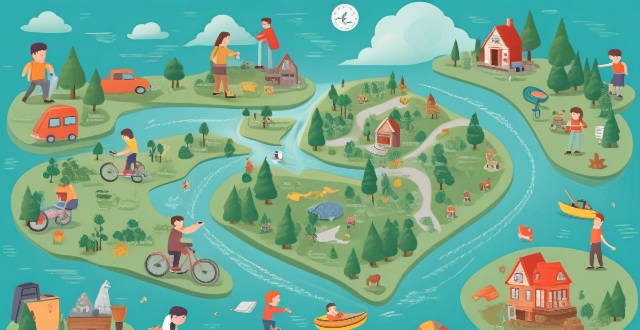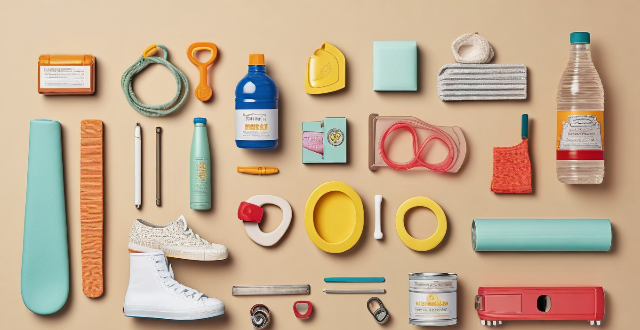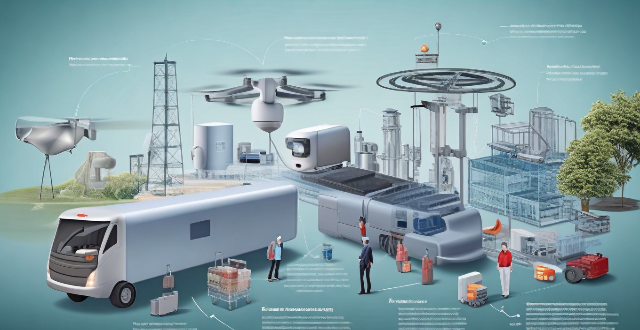Emergency Family

How can I ensure the safety of my family during an emergency ?
To ensure the safety of your family during an emergency, create an emergency plan that includes a contact list, meeting place, escape routes, and assigned responsibilities. Maintain essential supplies such as food, water, medical supplies, and an emergency kit. Stay informed about local emergencies through news sources, alert apps, and local alert systems. Secure your home by inspecting for hazards, reinforcing doors and windows, and having smoke detectors and fire extinguishers. Educate your family on self-defense techniques, first aid and CPR, and discuss potential emergencies.

How can I create an emergency evacuation plan for my family ?
Creating an emergency evacuation plan is crucial for the safety of your family during unexpected events such as natural disasters, fires, or other emergencies. Here are some steps to help you create a comprehensive emergency evacuation plan: 1. Identify potential risks that could affect your home and community. 2. Gather important information including contact information, medical information, insurance information, and financial information. 3. Determine the best evacuation routes from your home in case of an emergency. 4. Choose a meeting place outside of your home where your family can regroup in case of an emergency. 5. Practice your emergency evacuation plan with your family on a regular basis. 6. Stay informed about potential risks and updates from local authorities.

What should female travelers do in case of emergency abroad ?
Female travelers should prepare for emergencies abroad by researching their destination, having a travel plan, registering with their embassy, preparing an emergency kit, and learning basic language skills. In case of an emergency, they should assess the situation, seek help, take protective measures, and communicate with loved ones. After dealing with the immediate emergency, they should seek medical attention, report the incident, and reflect on their response. Additional tips include trusting their instincts, considering travel insurance, and staying connected.

What should be included in a basic emergency kit ?
A basic emergency kit should include essential items such as water, non-perishable food, a first aid kit, warm clothing and bedding, lighting and communication tools, a multipurpose tool, cash, personal documents, and a map. The contents may vary depending on the type of emergency and household size. It is important to regularly review and update the kit to ensure it remains effective.

How can I prepare for an emergency situation ?
The article provides a comprehensive guide on how to prepare for an emergency situation. It emphasizes the importance of being prepared for emergencies, which can strike at any time and pose a threat to the safety of individuals and their loved ones. The first step in preparing for an emergency is to assess the risks that are most likely to affect you. This involves identifying potential natural disasters or man-made emergencies that could occur in your area. Once you have identified these risks, you can begin to develop a plan for how to respond. The next step is to create an emergency kit that contains all the essential items you will need in case of an emergency. This includes water, non-perishable food, a first aid kit, a flashlight, warm clothing, a map of the area, a cell phone with charger, cash, and important documents. Having a plan in place is also crucial in ensuring that everyone knows what to do in case of an emergency. Your plan should include a designated meeting place, an evacuation route, a communication strategy, and a backup plan. Staying informed about local weather reports and news alerts is another important aspect of emergency preparedness. Signing up for community warning systems can also help you stay informed about potential emergencies in your area. Finally, practicing your emergency plan regularly can help ensure that everyone remains calm and focused during an actual emergency situation. This could involve conducting regular fire drills or practicing evacuation routes.

What kind of first aid supplies should I have in my home emergency kit ?
This article provides a comprehensive list of essential items to include in a home emergency first aid kit. It covers various categories such as adhesive bandages, gauze and roller bandages, medical tape and safety pins, antiseptics and disinfectants, pain relievers and fever reducers, tools and miscellaneous items, and personal items. The article emphasizes the importance of regularly checking expiration dates and replacing supplies as needed. It also suggests ensuring that all family members are aware of the kit's location and how to use its contents properly.

How can I educate my family about earthquake safety and evacuation procedures ?
Educating your family about earthquake safety and evacuation procedures is crucial due to the unpredictable nature of earthquakes. Understanding the basics of earthquakes, creating a safety plan, learning evacuation procedures, conducting drills, and staying informed are all important steps in ensuring your family's safety during an earthquake. By following these steps, you can prepare your family for earthquakes and ensure they know what to do in case of an emergency.

Are there any special considerations for creating an emergency kit for children ?
Special considerations for creating an emergency kit for children include age-appropriate items, comfort items, snacks and water, clothing and footwear, and entertainment. It is important to tailor the contents of the kit to the child's needs and abilities, and include items that can help to calm and reassure the child during an emergency situation.

How can I make a family dinner more interactive and engaging ?
Making family dinners more interactive and engaging requires planning and creativity. Incorporating themes, open-ended questions, cooking tasks, gratitude jars, and music can create an enjoyable experience that brings the family closer together while promoting communication, teamwork, and positivity.

How important is communication during an emergency response ?
Communication is a critical component of any emergency response. It helps to coordinate efforts, gather information, make decisions, and ensure the safety of all parties involved. Effective communication can streamline the response process and avoid confusion or misunderstandings. The importance of communication during an emergency response includes coordination, information gathering, decision making, and safety. Best practices for communication during an emergency response include using clear and concise language, establishing a chain of command, using multiple channels of communication, and maintaining situational awareness. By following these best practices, you can help to streamline the response process and minimize damage. Remember that effective communication is essential for ensuring the safety and well-being of everyone involved in emergencies.

What is the impact of communication interference on emergency services ?
Communication interference can significantly impact emergency services by delaying response time, impairing coordination, increasing risk to responders and victims, disrupting technology, and negatively affecting public perception. It is crucial for emergency services to prioritize reliable communication systems and protocols to minimize the impact of interference and ensure effective responses to emergencies.

What role does technology play in emergency response ?
The article discusses the various ways technology is used in emergency response, including communication via instant messaging platforms and two-way radios, GPS tracking for vehicles and personnel, data analysis for crime and fire trends, and the use of drones and robots. Technology has made emergency response more efficient and effective by improving communication, location tracking, data analysis, and automation.

How do I train my employees for emergency situations ?
Training employees for emergency situations is crucial to ensure their safety and minimize the impact of emergencies on your business. Here's a summary of the key steps involved: 1. Identify potential emergencies that could occur in your workplace, such as fire, medical emergencies, natural disasters, workplace violence, and chemical spills or hazardous materials incidents. 2. Develop an emergency plan that outlines the steps employees should take during each type of emergency. This plan should include evacuation procedures, first aid protocols, contact information for emergency services, safe locations, and procedures for accounting for all employees after an emergency. 3. Conduct regular emergency drills to ensure that employees are familiar with the emergency plan and know what to do in case of an emergency. Drills should be conducted at least annually and cover all types of emergencies identified in the emergency plan. 4. Provide training on how to use safety equipment such as fire extinguishers, first aid kits, and safety goggles. This training should be provided during new employee orientation and refresher courses should be offered regularly. 5. Encourage open communication between employees and management regarding safety concerns and suggestions for improvement. This can be done through regular safety meetings, suggestion boxes, or anonymous surveys. By following these steps, you can create a safe and prepared workforce that is ready to handle any emergency situation.

How important is it to have a portable emergency kit when traveling abroad ?
**The Importance of a Portable Emergency Kit for Traveling Abroad** Embarking on an international journey requires preparation, especially in handling unforeseen events. Here's why carrying a portable emergency kit is crucial: 1. **Preparedness for Unexpected Circumstances**: It helps manage medical emergencies, natural disasters, and travel delays effectively. 2. **Components of an Ideal Emergency Kit**: Includes first aid supplies, hygiene items, nutrition, lighting, important documents, and protective gear. 3. **Customization Based on Destination**: Tailor the kit to climate considerations and location-specific needs for better preparedness. 4. **Peace of Mind**: Being prepared offers peace of mind, allowing focus on enjoying the trip rather than worrying about potential issues.

How can I improve my company's emergency response capabilities ?
Improving your company's emergency response capabilities is crucial for ensuring the safety of employees, customers, and assets. Here are some steps you can take to enhance your organization's ability to handle emergencies effectively: 1. Conduct a Risk Assessment 2. Develop an Emergency Response Plan 3. Train Employees and Conduct Drills 4. Invest in Technology and Equipment 5. Maintain a Culture of Safety

Are there any family-friendly dining options with great deals ?
**Summary:** There are several family-friendly dining options that offer great deals, including Applebee's, Dairy Queen, Olive Garden, Chili's, Red Lobster, and IHOP. These restaurants provide various promotions such as Kids Eat Free nights, family meal deals, endless servings of certain dishes, and discounted drinks. It's recommended to check local listings and websites for more information on these offers.

How can I make a family dinner more budget-friendly ?
The article provides various tips for making family dinners more budget-friendly, including meal planning, buying in bulk, cooking from scratch, shopping seasonally, using leftovers creatively, avoiding impulse buys, and sharing meals with friends or family. By following these suggestions, families can save money while still enjoying tasty and nutritious home-cooked meals.

How do female entrepreneurs balance work and family life ?
Balancing work and family life for female entrepreneurs requires prioritizing time, delegating responsibilities, setting realistic goals, taking care of oneself, communicating with family, and seeking support from others. By implementing these strategies, a healthy balance between professional ambitions and personal responsibilities can be achieved.

What actions are being taken globally to address the climate emergency ?
The climate emergency is a pressing issue caused by human activities leading to global warming. International agreements like the Paris Agreement aim to limit global warming, and many countries have implemented national policies such as carbon pricing and renewable energy mandates. Corporations are also taking actions to reduce emissions and invest in clean energy. Addressing the climate emergency requires a global effort from all levels of society.

What are the key steps to take during an emergency evacuation ?
During an emergency evacuation, it is important to stay calm and alert, follow evacuation procedures, gather essential items, check for hazards, help others, listen to instructions from authorities, move quickly but safely, and assemble at designated areas. Staying calm helps in thinking clearly and making quick decisions, while being alert means paying attention to surroundings and instructions. Familiarizing with building's evacuation procedures beforehand, looking for exit signs, avoiding elevators, and using stairs are crucial. Gathering important documents, medications, and other essential items on the way out is also important. Checking for potential hazards such as fire, smoke, or structural damage, and seeking assistance from emergency personnel if a path is blocked is necessary. Helping others who may need assistance, remaining together as a group, and staying in contact throughout the evacuation process is recommended. Listening carefully to instructions given by authorities or emergency personnel is crucial as they may provide additional information about the situation or direct to specific locations for safety or further assistance. Moving quickly but avoiding running or pushing others, watching your step to avoid tripping or falling, especially if there are obstacles or debris on the ground is important. Proceeding to the designated assembly area where authorities can take attendance and provide further instructions, and not returning to the building until instructed to do so by authorities is also recommended.

What is the best way to store an emergency kit in a small apartment ?
When it comes to emergency preparedness, having an emergency kit is essential. However, if you live in a small apartment, finding the space to store all the necessary items can be challenging. Here are some tips on how to store an emergency kit in a small apartment: Determine the type of emergency kit you need, choose the right container, organize your kit, and store it properly. Keep your emergency kit in an easily accessible location, avoid storing it under heavy objects or in areas that may be blocked by debris during an emergency, check it regularly to ensure that items are still usable and up-to-date, replace any expired items promptly, and consider storing additional copies of important documents in your emergency kit. By following these tips, you can effectively store an emergency kit in a small apartment while still being prepared for any potential emergencies.

What are the best budget-friendly family meals ?
When it comes to feeding a family on a budget, there are plenty of delicious and nutritious meal options that won't break the bank. Here are some of the best budget-friendly family meals: 1. Spaghetti with Meat Sauce 2. Chicken Stir Fry 3. Baked Potatoes with Toppings 4. Tacos 5. Roasted Vegetables and Quinoa Salad

Can you explain the hierarchy of safety signage (i.e., prohibition, warning, mandatory, and emergency) ?
The hierarchy of safety signage is divided into four categories: prohibition, warning, mandatory, and emergency. Prohibition signs indicate actions that are not allowed, while warning signs alert individuals to potential hazards. Mandatory signs indicate required actions for safety, and emergency signs provide critical information during emergencies. Understanding this hierarchy is crucial for creating a safe work environment.

How do celebrities approach parenting and family life ?
Celebrities face unique challenges in balancing work and family life, providing a normal upbringing for their children, maintaining privacy, and teaching responsibility and values. They prioritize family time, involve their children in work, set boundaries, encourage independence, limit media exposure, focus on education, hire security personnel, use private spaces, keep personal lives offline, lead by example, discuss consequences, and volunteer together. These strategies help them navigate the complexities of raising children in the public eye while providing a loving and supportive environment.

Can you recommend family-friendly cruise options ?
This text provides recommendations for family-friendly cruise options, including Royal Caribbean International, Disney Cruise Line, Norwegian Cruise Line, and Carnival Cruise Line. Each cruise line offers unique amenities and activities that cater to families with children of all ages, making cruising an enjoyable experience for the whole family. The text also highlights the various features of each cruise line, such as family-friendly accommodations, kid-friendly entertainment, onboard pools, dining options, character encounters, kids clubs, family-friendly shows, spacious accommodations, recreational facilities, and affordable and fun cruise experiences.

How does participating in sports affect family relationships ?
The impact of sports participation on family relationships can be both positive and negative. Positive effects include enhanced communication, shared experiences, teaching responsibility, and promoting healthy habits. Negative effects may arise from time constraints, pressure and stress, and financial strain. To manage these challenges, families should set realistic expectations, make time for family activities, communicate openly, and manage finances wisely.

What steps should I take to prepare my home for a natural disaster ?
Preparing your home for natural disasters is crucial to ensure the safety of your family and property. Here's a summary of key steps: 1. **Assess Your Risk**: Identify potential disasters and determine your vulnerability based on location. 2. **Develop an Emergency Plan**: Create and practice a plan outlining evacuation routes and meeting places. 3. **Secure Your Home**: Take measures like securing loose objects, reinforcing windows/doors, installing shutters, anchoring furniture, trimming trees, clearing gutters, inspecting the roof, and considering a sump pump. 4. **Maintain Essential Supplies**: Stock up on food, water, medication, first aid kits, backup power sources, important documents in waterproof containers, and prepare an emergency kit. 5. **Stay Informed**: Keep updated on weather conditions and sign up for emergency alerts. By following these steps, you can significantly reduce the risks associated with natural disasters and ensure better preparedness and recovery.

What are the best holiday gifts for family members ?
Finding the perfect holiday gifts for family members can be a daunting task. However, with some thoughtful consideration and creativity, you can find something special that will bring joy to your loved ones. Here are some ideas for the best holiday gifts for family members: ## For Parents - Personalized Photo Album: Collect photos of family memories and create a beautiful photo album. You can personalize it with their names or a special message. - Spa Day Gift Basket: Give your parents a day of relaxation with a spa gift basket. Include items like bath bombs, scented candles, and massage oils. - Customized Jewelry: Surprise your parents with customized jewelry pieces such as engraved bracelets or necklaces with their initials or birthstones. - Subscription Boxes: Choose from various subscription boxes such as gourmet food, books, or gardening supplies based on their interests. - Tech Gadgets: If your parents love technology, consider getting them the latest gadgets like smart speakers, fitness trackers, or e-readers. ## For Siblings - Gift Cards: Let your siblings choose their own presents by giving them gift cards to their favorite stores or online shops. - Board Games/Puzzles: Spend quality time together by playing board games or working on puzzles as a family during the holidays. - Sports Equipment: If your siblings are into sports, consider buying them new equipment or gear for their favorite activities. - DIY Craft Kits: Get creative and make DIY craft kits with your siblings. You can make things like friendship bracelets, painted rocks, or tie-dye shirts. - Experience Gifts: Give your siblings an experience they'll never forget, such as concert tickets, cooking classes, or outdoor adventures. ## For Grandparents - Customized Family Tree Plaque: Create a personalized family tree plaque featuring all the names of the grandchildren and great-grandchildren. - Digital Photo Frame: Keep grandparents connected to their loved ones by gifting them a digital photo frame preloaded with pictures of the family. - Comfy Blankets/Throws: Give your grandparents warmth and comfort with soft blankets or throws in their favorite colors and patterns. - Memory Book: Compile a memory book filled with stories, recipes, and photographs from throughout the years to preserve family history. - Health & Wellness Products: Show your grandparents you care about their health by gifting them products like air purifiers, massage pillows, or foot baths.